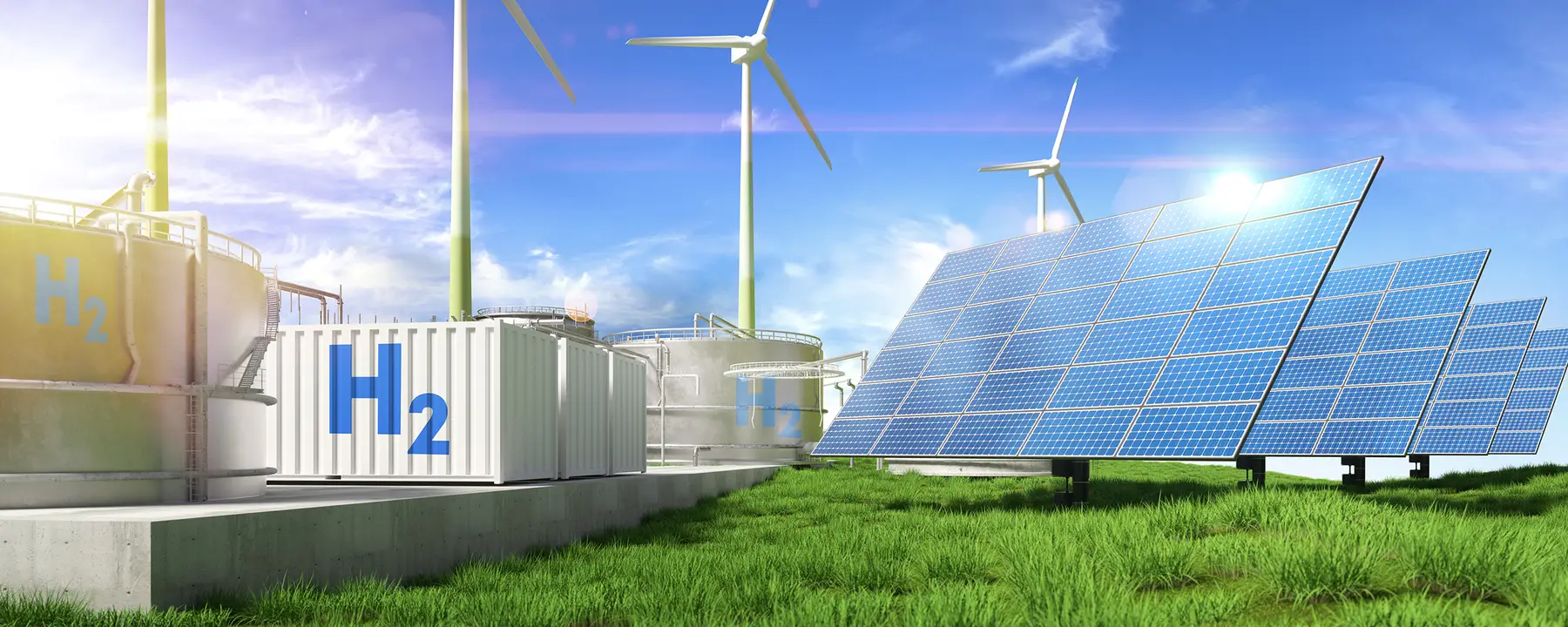Analyzing the opportunity for roll-to-roll membrane manufacturing in clean energy applications
Objective
To determine if roll-to-roll manufacturing of proton-exchange membranes (PEM) represents a significant growth opportunity for a confidential manufacturing company.
Approach
We provided a five-step Technology-Driven Market Intelligence process that analyzed, planned, researched, qualified, and reported the opportunity for PEM in hydrogen fuel cell markets for a confidential manufacturing company.
Impact
Our approach confirmed the market opportunity, identified potential industry partners and provided a detailed prediction of the hydrogen fuel cell and electrolyzer market growth.
Hydrogen Energy Presents a Potential New Clean Energy Source
Carbon dioxide and other greenhouse gas emissions are core climate change drivers, which poses a threat to the ecosystems and environments where we live. In response, over 30 countries and the European Union have set goals to achieve net zero carbon emissions by 2050. This lofty goal requires governments, industry leaders, and the community to come together and take action to invest in clean energy.
Approximately one-fifth of all carbon emissions come from the manufacturing sector of the economy. To reduce their emissions, manufacturing companies are looking for clean renewable energy. Energy from hydrogen presents great potential for an alternative fuel option because it can generate energy without combustion, making it a clean energy resource that does not emit carbon dioxide. Hydrogen energy is relatively new compared to combustion energy and must be analyzed through research and development before wide-scale use by industry leaders.
What is Hydrogen Energy and How Does it Work?
Hydrogen energy is a form of renewable energy that produces water as a byproduct. Energy from hydrogen is produced using a fuel cell (similar to the way batteries work). Hydrogen gas enters through one side of a fuel cell while air, containing oxygen, enters on the other side. As hydrogen travels through the fuel cell, it generates an electrical current. A core component of the fuel cell is a proton-exchange membrane, or PEM. Once the hydrogen reacts with the oxygen, it creates energy and produces H2O, also known as water.
Traditionally, hydrogen has been used in a wide variety of settings, including the oil industry and ammonia and methanol production. While the technology is still evolving, various industries are adapting to hydrogen energy. For example, hydrogen is being used in replacement of carbon emitting fuels in some steelmaking facilities. As of 2023, a limited number of hydrogen-powered vehicles are on the streets in California. Very few manufacturing leaders are using hydrogen energy solely, but some are relying on it as a backup energy source, with the potential to grow its capabilities.
PEM Market Exploration for Manufacturing Settings
A manufacturer of continuous, roll-to-roll film and membranes manufacturing company sought the help of RTI Innovation Advisors to better understand their market opportunities in the clean energy space, particularly around hydrogen fuel cells, which convert hydrogen to electric power, and electrolyzers, which splits water into hydrogen and oxygen. Both technologies rely on proton exchange membranes (PEMs). While fuel cells and electrolyzers are not new technologies, the urgency to reduce carbon emissions and achieve Net Zero by 2050 requires deployment of green hydrogen production (via electrolyzers) and use (via fuel cells) at orders of magnitude higher scale than current use. Our client needed expertise in market prediction, to determine whether these market opportunities were real and how large they will be to determine if it is a worthy investment.
RTI advised the client on five areas of green energy exploration:
- Fuel cell market size, growth, and key player applications
- Key performance criteria
- Incumbent hydrogen fuel cell membrane suppliers’ products, applications, underlying technologies, relative advantages and disadvantages, and gas/unmet needs
- Whether adjacent applications and markets exist
- Competitiveness of PEM fuel cells versus competitive technologies (i.e. solid oxide fuel cells and batteries)
Our team deployed a five-step Technology-Driven Market Intelligence (TDMI) process and explored how hydrogen fuel cells could help our client innovate. To understand the clean energy market and its clients, we conducted a series of conversational interviews with manufacturers, researchers, industry observers and other experts. Their insights informed the development of actionable recommendations, including which market segments to pursue and how to engage in those segments.
Opportunities for Growth in Hydrogen Markets
Through our research, RTI Innovation Advisors identified opportunities that connected our client with key players who are seeking or already invested in fuel cell and electrolyzer markets. Our team reviewed aggregated market size estimates and predicted over a 20% increase in the fuel cell market by 2028 and a 30% growth in electrolyzers in western countries. Predictions varied in the type of fuel cell applications used in the future. We also identified a limited number of competitors that are already trying to win the hydrogen fuel energy market.
Additionally, we identified government support, specifically the U.S. federal investment in green hydrogen energy, which was announced in the Infrastructure Investment and Jobs Act. By addressing the limitations and benefits of hydrogen energy, we provided a full market review, allowing our client to make an educated investment in PEM production.
Learn More about RTI Innovation Advisors.



